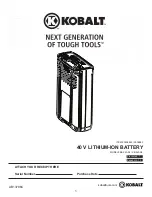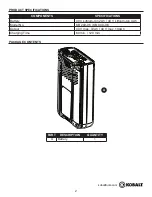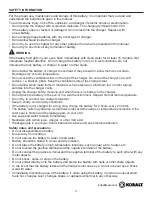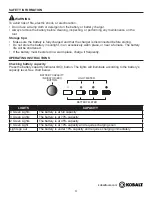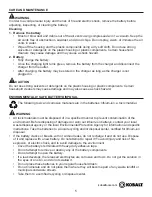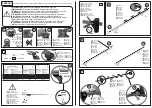
kobalttools.com
5
Do not use strong solvents or detergents on the plastic housing or plastic components. Certain
household cleaners may cause damage and may also cause a shock hazard.
CARE AND MAINTENANCE
CAUTION
Cleaning
1. Remove the battery
• Brush or blow dust and debris out of the air vents using compressed air or a vacuum. Keep the
air vents free of obstructions, sawdust, and wood chips. Do not spray, wash, or immerse the air
vents in water.
• Wipe off the housing and the plastic components using a dry soft cloth. Do not use strong
solvents or detergents on the plastic housing or plastic components. Certain household
cleaners may cause damage and may cause a shock hazard.
2. Battery
• Fully charge the battery.
• Once the charging light turns green, remove the battery from the charger and disconnect the
charger from the outlet.
• After charging, the battery may be stored in the charger as long as the charger is not
plugged in.
In order to avoid personal injury and the risk of fire and electric shock, remove the battery before
adjusting, inspecting, or cleaning the battery.
WARNING
ENVIRONMENTALLY SAFE BATTERY DISPOSAL
WARNING
The following toxic and corrosive materials are in the batteries: lithium-ion, a toxic material.
• All toxic materials must be disposed of in a specified manner to prevent contamination of the
environment. Before disposing of damaged or worn out lithium-ion batterys, contact your local
waste disposal agency or the local Environmental Protection Agency for information and specific
instructions. Take the batteries to a local recycling and/or disposal center, certified for lithium-ion
disposal.
• If the battery cracks or breaks, with or without leaks, do not recharge it and do not use. Dispose
of it and replace with a new battery. Do not attempt to repair it! To avoid injury and risk of fire,
explosion, or electric shock, and to avoid damage to the environment:
• Cover the battery’s terminals with heavy-duty adhesive tape.
• Do not attempt to remove or destroy any of the battery components.
• Do not attempt to open the battery.
• If a leak develops, the released electrolytes are corrosive and toxic. Do not get the solution in
the eyes or on skin, and do not swallow it.
• Do not place these batteries in your regular household trash.
• Do not incinerate and do not place them where they will become part of any waste landfill or
municipal solid waste stream.
• Take them to a certified recycling or disposal center.

